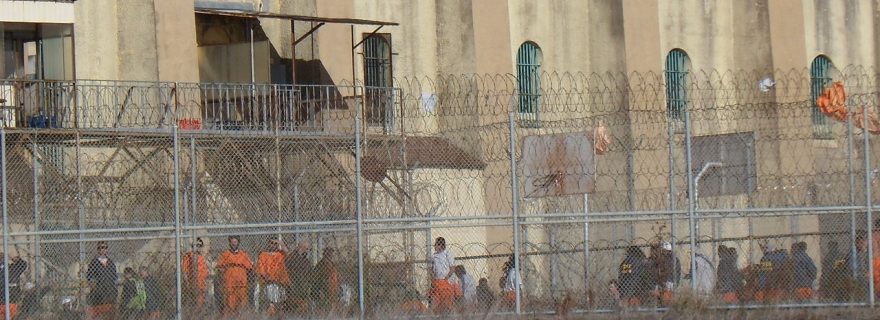COVID-19: Prisons as Public Health Risks
The COVID-19 pandemic has underscored the public health risks that prisons pose as reservoirs of contagious disease. Confinement involves close contact and shared facilities, which is inherently a risk factor for contagions.
In 1791, the prison reformer John Howard lamented the risk that prisons and jails posed to public health, both of the inmates and of the broader community. Institutions such as Old Newgate had cells “so close, as to be almost the constant seats of disease, and sources of infection, to the destruction of multitudes, not only in the Prison, but abroad.” More than two hundred years later, in the midst of the global pandemic of the novel coronavirus, the problem persists: the U.S. has multiple prisons with significant clusters of hundreds of cases, Brazil has seen riots and escapes motivated by anger over risks of COVID-19, and Iran has released 85,000 prisoners to control the spread of the disease. These are a handful of examples; the disease is almost certainly inside hundreds of prisons around the globe. The World Health Organization has warned of “huge mortality rates” in prisons in the current pandemic.
Eighteenth century prisons were particularly dismal, and conditions in many institutions have improved since Howard’s day. However, it is important not to assume that prisons have become sanitary or healthy places. The continued neglect of inmate health in many countries and institutions, as well as the inherent conduciveness of collective confinement to disease transmission, have continued to facilitate outbreaks behind bars. As The Economist observed, it is impossible to socially distance in prisons. Prisoners nearly everywhere share common facilities, spaces, and dining areas, and it is not unusual for prisoners to share sleeping areas or sanitary facilities as well. In addition, prisoners often have high levels of comorbidities and underlying health conditions, such as substance abuse disorders and autoimmune diseases, which weaken the immune system and make them a vulnerable population for the spread of disease.
For these reasons, public health experts have been raising concerns about the risks of prisons since long before the outbreak of the novel coronavirus. Prisons in the United States are hotbeds of tuberculosis, and Scotland, England, and India have seen outbreaks of HIV, hepatitis, and other bloodborne pathogens, and other blood pathogens in custody.
And although the health of people in prisons would be more than enough reason to take action, we must also understand that diseases which spread in prisons do not stay in prisons. Public health researchers across the globe have repeatedly affirmed the transmission of tuberculosis from prisons to the larger community. A systematic literature review of studies on prisons and community TB transmission across Europe, North and South America, and Asia concluded that “prisons represent a reservoir for disease transmission to the community at large; the TB infection may spread into the general population through prison staff, visitors, and close contacts of released prisoners”.
Based on everything we know about public health, the novel coronavirus, and community transmission, two things are clear. First, the novel coronavirus is a major threat to the lives and well-being of incarcerated populations across the globe. In an environment with rates of vulnerabilities and comorbidities, low access to protective equipment, and minimal possibilities for physical distancing, prisoners are under extreme threat from this capricious new disease. Second, coronavirus clusters in prisons will also act as reservoirs of continual community spread and provide routes of transmission to the wider public, even in communities that have otherwise controlled the virus.
Some countries have begun to respond to the coronavirus crisis in prisons – sometimes by temporary release and furloughs, sometimes with expanded access to personal protective equipment (PPE) (though prisoners are often low priority for this), or in the case of the Netherlands, by restricting visitation and community access to limit the spread.
However, it would be a dire mistake to stop there. Yes, the coronavirus is a timely and pressing public health problem in prisons, but the problem of disease transmission was there before COVID-19, and it will be thereafter. Prisons have long imposed serious public health costs on prisoners, who are sentenced to the loss of their health alongside their freedom, and on the wider communities prisons interact with. After COVID, TB and HIV will still be there, and when the next pandemic arises (and it will), if prisons remain mostly unchanged, we will be exactly where we are now.
Prisons must be public health priorities. In the short term, this means being treated as critical sites for healthcare and supplies, taking urgent priority over many other needs, because of their significant effect on population health. In the long term, the emerging global conversation about decarceration and criminal justice alternatives must take account of the public health benefits that decarceration would bring. Even if prisons return some public benefits, is it worth the significant health costs they impose on us all? Will it still be worth it if the next pandemic is worse?



0 Comments
Add a comment